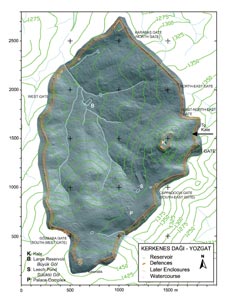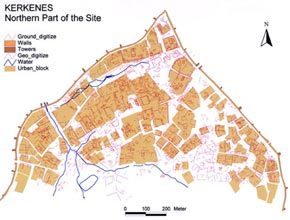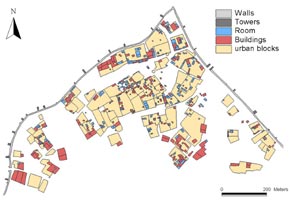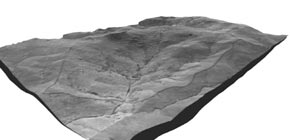| |
Digital Elevation Model:
Islem GIS, using ERDAS Imagine software, made a Digital Elevation Model
(DEM) of the city from the GPS data. The computer at Islem was left
on all night to process the data! The Kerkenes Team was also to face
the complex issue of coordinate systems. In 1993 a local grid was set
up, as described above, in which the main north-south axis was determined
with a handheld compass. The origin (0,0) was conveniently placed outside
the site area so that the crosses, which were marked on the ground,
could be simply referred to as 'Cross 10-15' (east 1000m and north 1500m
from the origin) whereas the 20 by 20m geophysical grid squares were
labelled, e.g., 'e024n120' (referring to coordinate of the SW corner
of the square as east 240m and north 1200m). When the GPS was first
used in 1997 it was clearly not possible to alter the established grid.
Conversion from UTM to our local Cartesian system had to be envisaged.
We now have a set of fully converted UTM data and that it is also possible
to convert all other data from the local system to UTM.
|
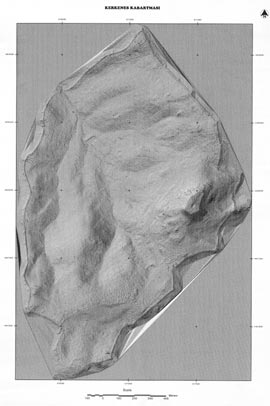
|
|


